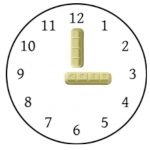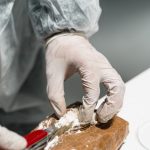How Long Does Acid Take To Kick In?

Acid, scientifically known as lysergic acid diethylamide or LSD is a synthetic (man-made) drug that has been abused for its hallucinogenic properties since the 1960s. If consumed in a sufficiently large dose, lysergic acid produces delusions and visual hallucinations that distort the user’s sense of time and identity. LSD is a Schedule I substance under the Controlled Substances Act. Schedule I drugs, which include heroin and MDMA, have a high potential for abuse and serve no legitimate medical purpose.
Lysergic acid generally is taken by mouth. The drug is colorless and odorless but has a slightly bitter taste. Individuals of all ages use lysergic acid. Data reported in the National Household Survey on Drug Abuse indicate that an estimated 20.2 million U.S. residents aged 12 and older used LSD at least once in their lifetime. The survey also revealed that many teenagers and young adults use LSD–742,000 individuals aged 12 to 17 and 4.5 million individuals aged 18 to 25 used the drug at least once.
LSD use among high school students is a particular concern. More than 8 percent of high school seniors in the United States used the drug at least once in their lifetime, and nearly 4 percent used the drug in the past year, according to the University of Michigan’s Monitoring the Future Survey.

How Long Does Acid Take To Kick In?
LSD is one of the most potent of all drugs because it is active in extremely small amounts. One dose is usually 50 to 300 micrograms which is equivalent to 0.00005 to 0.00003 grams. One ounce is able to supply approximately 300,000 doses.
LSD is quickly absorbed from the stomach and intestines and effects are felt within 30 to 40 minutes. The physical effects of LSD include dilated pupils, higher body temperature, increased heart rate, and blood pressure, sweating, loss of appetite, sleeplessness, dry mouth, and tremors. The trip kicks within 20 to 90 minutes of ingesting the drug and last anywhere from 6 to 15 hours, most trips won’t last more than 12 hours.
Within an hour after ingestion of LSD, psychic effects occur which causes a distortion in sensory perception. All of the body’s senses are affected by LSD, but vision is affected the most. The color and texture of things become more vivid and perception is increased. Pseudohallucinations – unreal images that the LSD user can distinguish as unreal – are common occurrences. Hallucinations – the user believes an imaginary vision is real-is uncommon at ordinary doses.
After your trip is over, you may experience “afterglow” effects for another six hours. Between the initial trip and the comedown, it can take up to 24 hours before your body returns to its typical state of being.
How long does acid stay in your system?
There are several factors that come into play when estimating how long Acid will stay in your system because every patient has physiology unique to them. Here are some major factors you should consider when trying to understand how long Acid will stay in your body:
• Age: Typically, the younger you are, the more efficient your body functions are. The more efficient your body functions, the faster acid will be removed from your system.
• Amount: The higher the dose of acid you have been taking, the longer acid will take to be removed from your system.
• Genetics: Genes predispose people to different metabolic functions, which is a key factor in how your body processes medications like acid. For this reason, your genetic makeup comes into play when estimating how long Acid will remain in your system.
• Kidney and liver functions: The liver and kidneys eliminate everything you ingest, and acid is no exception. If your liver or kidneys are damaged, it will most likely take longer for your body to remove the acid from your system.
• Metabolism: Your metabolism determines how quickly you process foods, liquids, and medications such as acid. If your metabolism is slow, it will take longer for your body to process and eliminate Acid from its system than someone with a fast metabolism.
• Usage frequency: The longer you have been taking acid, the longer it will remain in your system. For example, it will take longer for someone who has taken acid for several years to remove Acid from the body than someone who has only been taking Acid for a few months.
Studies indicate that the acid disappears from the brain in 20 minutes, but the effects are prolonged and may last many more hours after it disappears from the brain. LSD has a first-order elimination. LSD lasts up to 12 hours in the body with dose-proportional pharmacokinetics. Traces of acid will be detectable in your urine for five days and in your hair follicles for 90 days after ingestion.
How to flush out acid from your body
Although LSD is considered to be a non-addictive drug, people can become addicted to the sights, sounds, and revelations they experience while “tripping.” Users can develop both tolerance and psychological dependence on Psychedelics like LSD. A healthy diet plays a significant role in your recovery from acid dependence. It restores the nutrients that were lost from substance abuse. Therefore, when eating your three meals a day, it is important to choose food that rebuilds your body’s tissue and boosts your energy levels. The right foods can accelerate your recovery, particularly during acid detox.
During acid detox, you should have access to nutritious fruits and vegetables that replenish vitamins and minerals. In many ways, a healthy diet can produce the same level of excitement and energy you felt when you were high with acid. You can flush acid faster from your system by:
Drinking Enough Water: The most basic and essential food that can speed up your recovery is actually water. Your body has suffered from a lack of hydration for a long time. Although water is a neutral element – it provides no nutrients but also doesn’t harm your body in any way – it is the most basic sustenance you can intake during detox. Hydrate as much as you can in the first few days and keep drinking water throughout acid rehab. The oxygen in water heals your body and gives you a ton of energy.
Eating Energy-Boosting food: Acid use can “flatten the energy landscape” and drain your body of much-needed energy. When you lack energy, you are not motivated to do anything. Important food in recovery that restores energy includes:
• Healthy carbohydrates
• Leafy vegetables
• Peanuts
• Pistachios
• Almonds
These types of foods can also give you an extra kick of energy. Try to eat foods rich in iron, phosphorus, magnesium, calcium, potassium, and vitamins A, B, and E.





